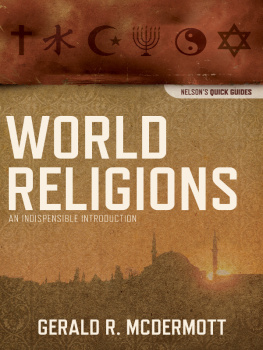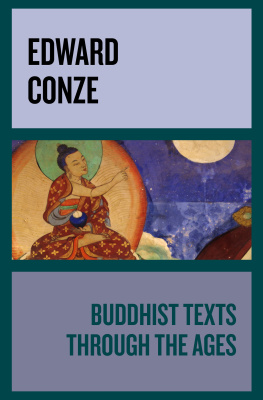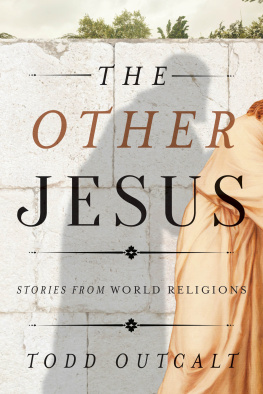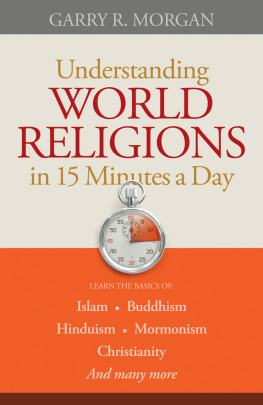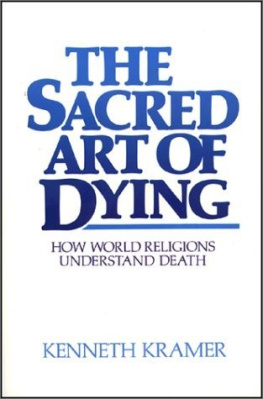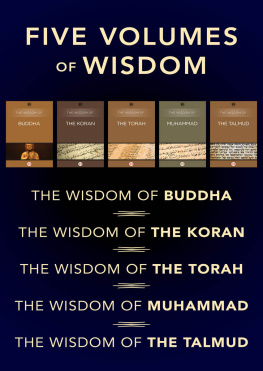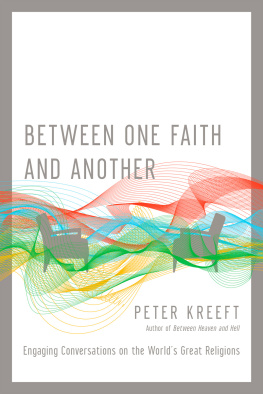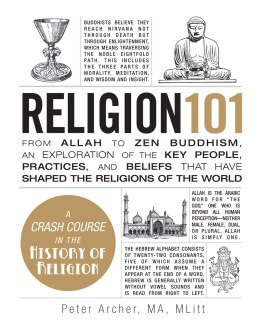
Photo by Thomas Kitts
Marilyn McFarlane , raised in a devoutly religious family, always had an interest in the diversity of world faiths. During her journeys as an author and travel writer, Marilyn continued her education by exploring sacred sitesHindu temples in India, European cathedrals, Buddhist shrines, neo-Pagan altars, mosques in Morocco, and many more.
With the firm belief that understanding others faiths can lead to tolerance, acceptance, and peace, and an equally firm belief in the power of story, Marilyn wrote Sacred Stories . A mother and grandmother, she lives in Portland, Oregon, with her husband, two cats, and many books. Learn more about Marilyns work at:
marilynmcfarlane.com


Sacred
Stories



ALADDIN
An imprint of Simon & Schuster
Childrens Publishing Division
1230 Avenue of the Americas
New York, NY 10020
www.SimonandSchuster.com

BEYOND WORDS
20827 N.W. Cornell Road, Suite 500
Hillsboro, Oregon 97124-9808
503-531-8700 / 503-531-8773 fax
www.beyondword.com
This Aladdin/Beyond Words edition March 2012
Copyright 1996, 2012 by Marilyn McFarlane
Previously published by Sibyl Publications, Inc. as Sacred Myths
All rights reserved, including the right of reproduction in whole or in part in any form.
ALADDIN is a trademark of Simon & Schuster, Inc., and related logo is a registered trademark of Simon & Schuster, Inc.
Beyond Words Publishing is a division of Simon & Schuster, Inc.
The Simon & Schuster Speakers Bureau can bring authors to your live event. For more information or to book an event contact the Simon & Schuster Speakers Bureau at 1-866-248-3049 or visit our website at www.simonspeakers.com .
Managing editor: Lindsay S. Brown
Design: Sara E. Blum
Illustrations: Caroline O. Berg ( http://os2.dhs.org/~carrie/Index.html )
The text of this book was set in Adobe Garamond Pro.
The illustrations for this book were rendered in Adobe Illustrator.
Library of Congress Cataloging-in-Publication Data
McFarlane, Marilyn.
Sacred stories: wisdom from world religions / Marilyn McFarlane.
p. cm.
Includes bibliographical references and index.
1. Religions. 2. StorytellingReligious aspects. I. Title.
BL80.3.M44 2012
201'.3dc23
2011020561
ISBN: 978-1-58270-304-6 (pbk)
ISBN: 987-1-58270-334-3 (hc)
ISBN: 978-1-4424-4125-5 (eBook)
To my grandchildren, who love a good story, and to all children.

Contents


Introduction

L ong ago, myths about gods and goddesses helped people explain the natural world. When people heard thunder or saw lightning, they believed the sky gods were angry; when the sun rose or rain fell on their fields or a rainbow appeared in the sky, they said the gods and goddesses made it happen. People from the same regions came to believe the same stories. They developed rituals around them that became religions as people worshipped these powerful beings, asking for their blessings and expressing thanks.
Over the centuries, religious beliefs changed and shifted; now hundreds of different religions exist around the world, each with its own fervent followers. Some people think that their religion is the only true and correct one. Some have gone to war to force others to change their spiritual beliefs, because they want everyone to believe as they do.
Today, science explains how nature and the universe work, and many people say that religion isnt needed. Yet religious feelings and beliefs are as strong as ever. They must be more than a substitute for science.
What all the worlds religions have in common is a belief in a greater power. Some of them have no word and no picture for this power; they say its the force that makes the earth spin, the stars and planets move, and life grow and fade and grow again in a vast cycle. Others think of the power as a loving, sometimes strict father or mother. Still others say it has many names and faces, both male and female.
This book tells a few of the best-known stories of the main religions in the world today. Some were told orally for many years before they were ever written down, with details evolving over time, and by region. Others are believed to have been transcribed around the time the events happened. Even if you already hold beliefs in one of these systems, reading or hearing the stories will help you understand more about the beliefs and the people who base their lives on them.
Some of these sacred stories might be considered fables or tales, but all are in the mythic tradition. To say a story is a myth does not mean it is a lie. It may not be literal fact, but it tells a story that is deeper than fact because it holds an important truth about life. We put the truth into story form because humans use stories and pictures to understand what cannot be seen and touched. Perhaps this is why so many traditions share similar themes and lessons. Collectively, these stories are part of our global heritage, the wisdom passed down through generations. They are as important to human identity as our music, art, laws, and other aspects of civilization.
A myth is more than a tall tale or an adventure story. Myths show us the truth about human beliefs.
The religions in this book appear in alphabetical order.
The Golden Rule

Buddhism:
Hurt not others with that which pains yourself.
Christianity:
Do unto others as you would have them do unto you.
Hinduism:
Treat others as you would yourself be treated.
Islam:
Do unto all men as you would wish to have done unto you.
Judaism:
What you yourself hate, do to no man.
Native American:
Live in harmony, for we are all related.
Sacred Earth:
Do as you will, as long as you harm no one.

Part 1

Buddhism
B uddhism began 2,500 years ago, when Siddhartha Gautama ( sid-AR-tha gah-TAH-mah ), a wealthy prince in northern India, left his life of ease and luxury to see if he could find a way to end suffering in the world.
Next page

